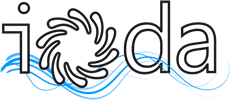Research Fellows
Chris Kapellos
Early Stage Researcher 15 at Volkswagen
The aforementioned workflow was applied to optimise the side mirror of the DrivAer vehicle developed by TU Munich, targeting at turbulence noise minimisation. The test case is thoroughly described in deliverable 1.1 “Initial Test Cases” and the adjoint sensitivities computed on the first optimisation cycle are shown in figure 1. Four morphing techniques were used to handle the mirror geometry displacement:
- Implicit Smoothing, mesh-based method: The normal displacement of each node of the surface mesh is used as design variable for this method. The raw adjoint sensitivities are usually too noisy to be used directly for mesh displacement. With this methodology the adjoint sensitivities are smoothed by solving an implicit smoothing equation and the resulting sensitivity map is appropriate for mesh displacement, avoiding in this way any geometry oscillations or discontinuities.
- Volumetric B-Splines, mesh-based method: The design variables are a user-defined set of control points, which describes analytically, and with the use of the Volumetric B-Splines Basis Functions, any grid node. The adjoint sensitivities are projected to the control points and the gradient of the objective function is computed and used to update the coordinates of the control points, and consequently, the mesh nodes.
- CAD Finite Differences, CAD-based method: Based on the STEP geometry of the DrivAer mirror, a CAD model was built in CATIA v5. The design variables of the optimisation problem are the coordinates of the points of the parametric model. In each iteration, the CAD gradients are computed with Finite Differences and are combined using the chain rule with the adjoint sensitivities to compute the gradient of the objective function with respect to the CAD parameters.
- Differentiated Open Cascade, CAD-based method: A set of NURBS surfaces was created with Open Cascade and fitted to the neck of the DrivAer mirror, the part with the highest adjoint sensitivity. The design variables of the optimisation problem are the control points of the NURBS surfaces.
The four optimised geometries, obtained after the application of the described workflow, are presented in figure 1. In all cases, the biggest displacement is observed on the mirror neck, the part with the highest adjoint sensitivity. The gain in objective function achieved by each method is presented in table 1.
|
Implicit Smoothing |
Volumetric B-Splines |
CAD Finite Differences |
Differentiated Open Cascade |
|
11.94% |
5.72% |
5.14% |
15.12% |
Table 1. Improvement in the objective function after the convergence of the optimisation algorithm.
The biggest reduction in the objective function was achieved by the differentiated Open Cascade and the Implicit Smoothing methods. The first one uses an effective parameterisation, namely the NURBS surfaces of the geometry, while the latter searches the richest possible design space, the mesh nodes on the mirror surface, to find the optimal solution. The optimised geometry obtained by the Volumetric B-Splines morpher has been displaced more rigidly, also on areas where the sensitivities where close to zero. The selection of a different control box, would lead to a different parameterisation and possibly to a better local minimum. Similarly, the parameterisation used for CAD Finite Differences, the coordinates of the CAD model points, was proven to be less flexible that the other methods and the optimisation algorithm was trapped in a local minimum.
 |
||||||
|
||||||
 |
||||||
|

